Information
sheet on Rodents.
ABN 47 091 891 253
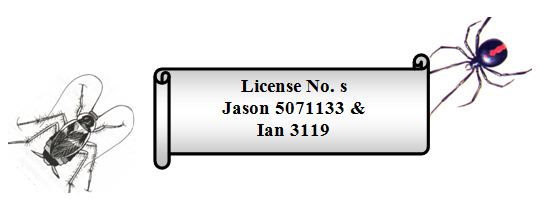
Office Phone: (02) 9631 3585
Jason’s Mobile: 0414 434 958
email: adaptablepc@ozemail.com.au
ABN 47 091 891 253

Office Phone: (02) 9631 3585
Jason’s Mobile: 0414 434 958
email: adaptablepc@ozemail.com.au
While most pests in urban environments are arthropods, rats and mice belong to the mammal group, of the warm blooded, fur covered rodent family. Rodents derive their name from the Latin rodere ‘to gnaw’. This name refers to their habit of chewing or gnawing, which is necessary to control the size of their characteristic, chisel-shaped, front incisor teeth that never stop growing.
Urban pest control operators typically expend much energy in trying to control these very cunning and often cautious pests. The three groups that are of most concern to urban pest controllers in Australia are:
These mammals are well adapted to living in very close association with humans, often sharing their shelter. Throughout history, rats and mice have been responsible for enormous losses of food, in crops and stored goods, and owing to their ability to transmit diseases to humans, (by a variety of means), caused enormous losses of human life.
The distribution and abundance of these pests is largely determined by availability of food and shelter. Rodents will enter buildings mostly seasonally, but in some cases remain if conditions are favorable. Alternatively they may only be problems under changes of conditions such as renovation disturbance, or if feeding in schools, can be a problem to adjacent buildings, over holiday periods when food is scarce.
Being basically social animals, rats and mice live in groups. Nests are constructed of any soft material available,
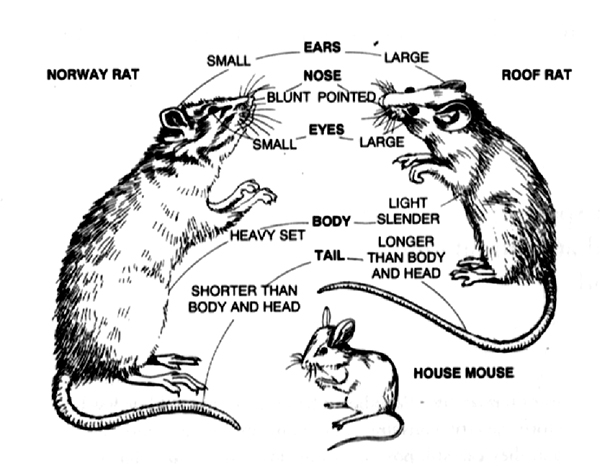
e.g. paper, fabrics, insulation or dried grass and leaves. They live in burrows adjacent to waterways, under buildings, in trees or vines, around rubbish tips, and can build in wall cavities or roof voids.
They are very agile and mostly nocturnal, but will roam in the day if the population is very large, food shortages occur, or they feel little sense of danger. In movements to and from the nest site, they are very sensitive to, and wary of, their environment. They have very poorly developed sight, but a keen sense of smell, taste, hearing, and touch.
Controllers have a number of ways to confirm identification, but do so mostly:
by knowing the habits and scats (droppings) of the various species, and by sighting the rodent (less often).
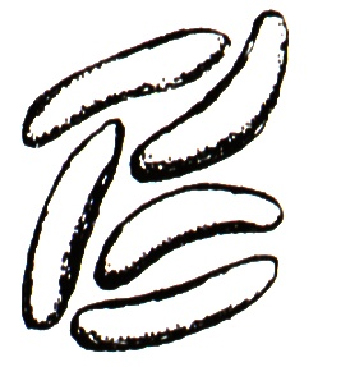
The scats of the Norway rat are the largest of the three, 18 mm long, are blunt ended, and bulky.
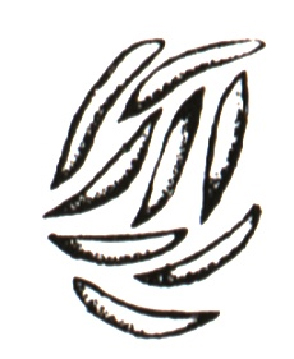
The Roof rat has smaller scats. These are about 12 mm long, are very pointed and not as bulky.
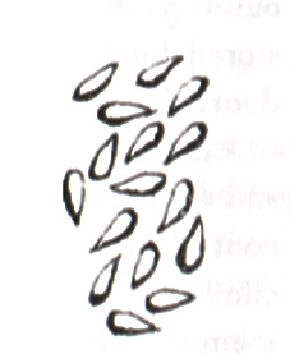
The House mouse is easy to identify in comparison to its larger
cousins with scats only 3-4 mm long and again quite pointy.
They can however, be confused with - the droppings of cockroaches to the less experienced eye.
Rats will use the same routes as much as possible, running close to walls or objects and avoiding open spaces. This can lead to “runs” where the oil from their fur leaves a ‘rub mark’ that can clearly be seen. They are also ‘neophobic’ that is – they have a fear of new objects or changes in the environment. This often means they will avoid bait stations for the first few days after it is introduced. They will also avoid traps and are seldom caught in them. Once they have seen a colleague in a trap they learn and remember to stay clear.
Mice on the other hand who maintain a high degree of caution in their movements are very curious and adventurous, investigating new food sources within a very short period of time and will nibble several sites of food at a number of locations. Due partly to their inquisitive nature they are much easier to trap and with live traps can often be an attractant to each other.
Both rats and mice have litters of young. Rats 6-10 per litter and breed 4-6 times a year, mice 5-6 per litter but breed 6-10 times a year. That means both can produce up to 60 offspring per year and as they reach sexual maturity in 6 –18 weeks that multiplication rate is potentially extreme.
Rodents are a nuisance as well as a danger for several reasons:
At ADAPTABLE Pest Control we like to utilize a range of control methods in an integrated approach to the problem. There are Non-chemical approaches using physical and cultural methods as well as chemical alternatives.
Physical methods involve trapping, through use of things like sticky boards, spring traps, as well as other live trapping methods. Efforts can be taken to sealing, where feasible, cracks, crevices, or holes which provide entry points. Closing off the entry points such as around pipes through floors or walls, using door slides or seals to block gaps, or even stoppers to cause gutters or vent pipes from being used as pathways.
Cultural control involves altering conditions to make the environment less attractive to the pest. Much of which involves recommendations to customers for things like the repair of leaking taps and pluming that provides water for the rodents. There is also correct storage in closed containers of rubbish or food items. Along with correct cleaning in areas such as commercial kitchens.
With chemical treatments again there are a number of control options. This will be governed by things like the species, size of the population, distribution of the problem, even the type of construction of buildings, along with many other factors.
The most common chemicals used today are anticoagulant rodenticides. These chemicals reduce the ability of the blood to clot, leading to death due mainly to haemorrhage. This is often internal bodily damage that occurs normally, but when clotting is impaired becomes fatal.
The chemicals can be disguised in liquid, grain and pellets, or as wax blocks. They can be single dose feeds or multiple dose. Irregardless of the presentation or dose they generally cause death in 4-10 days.
The advantage of these anticoagulant rodenticides is:
It is important to note that eradication of an infestation can be achieved successfully, only to have a second infestation a few weeks later requiring another treatment (sometimes with different bait) - if a local population group is large.
For this reason control can often involve an extended approach with frustrations for both customers and controllers.
Fill Out The Form Below to get a coupon good for Free Consultation by one of our highly trained Pest Control Techs, or give us a call today at 0414 434 958…